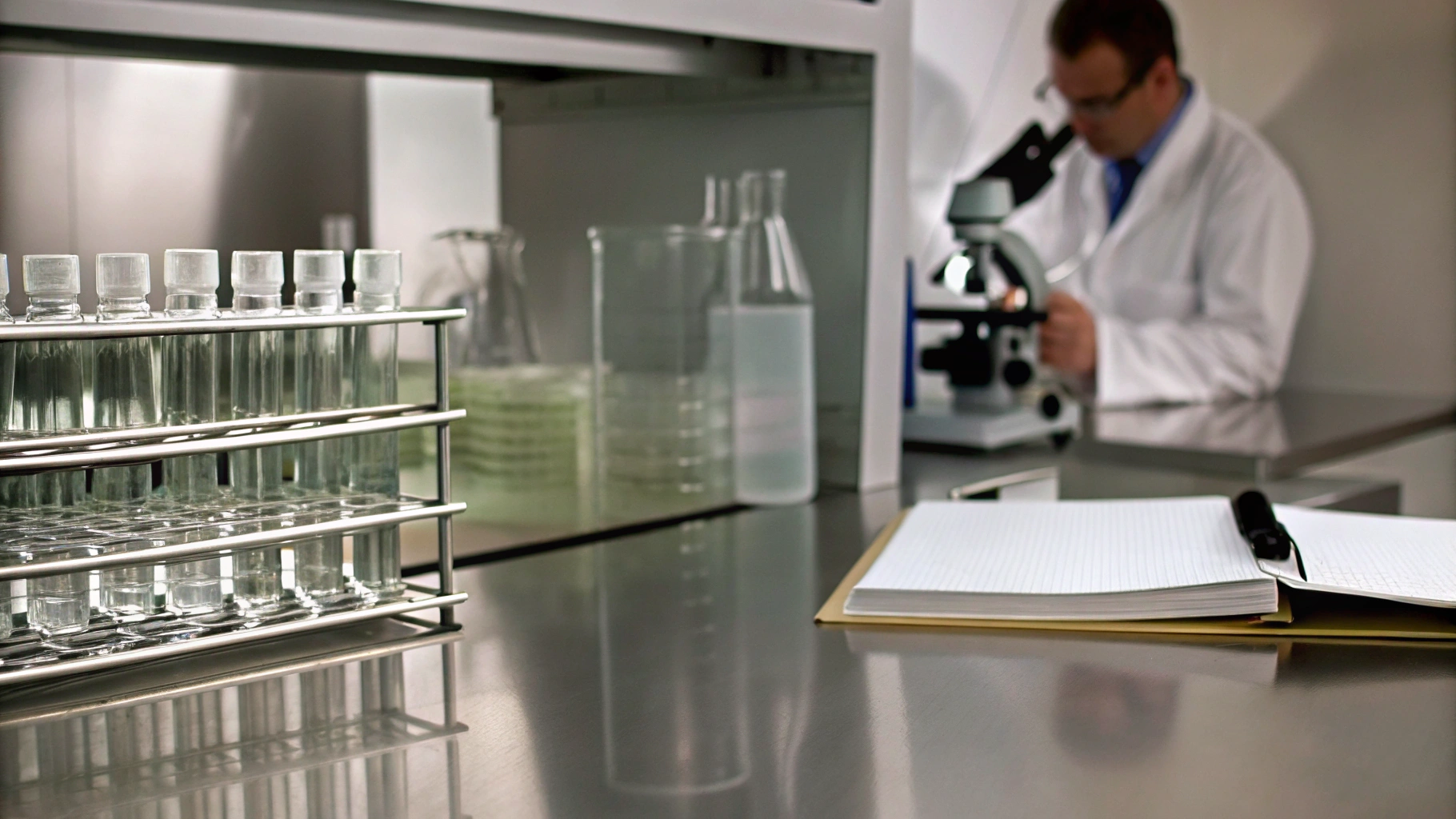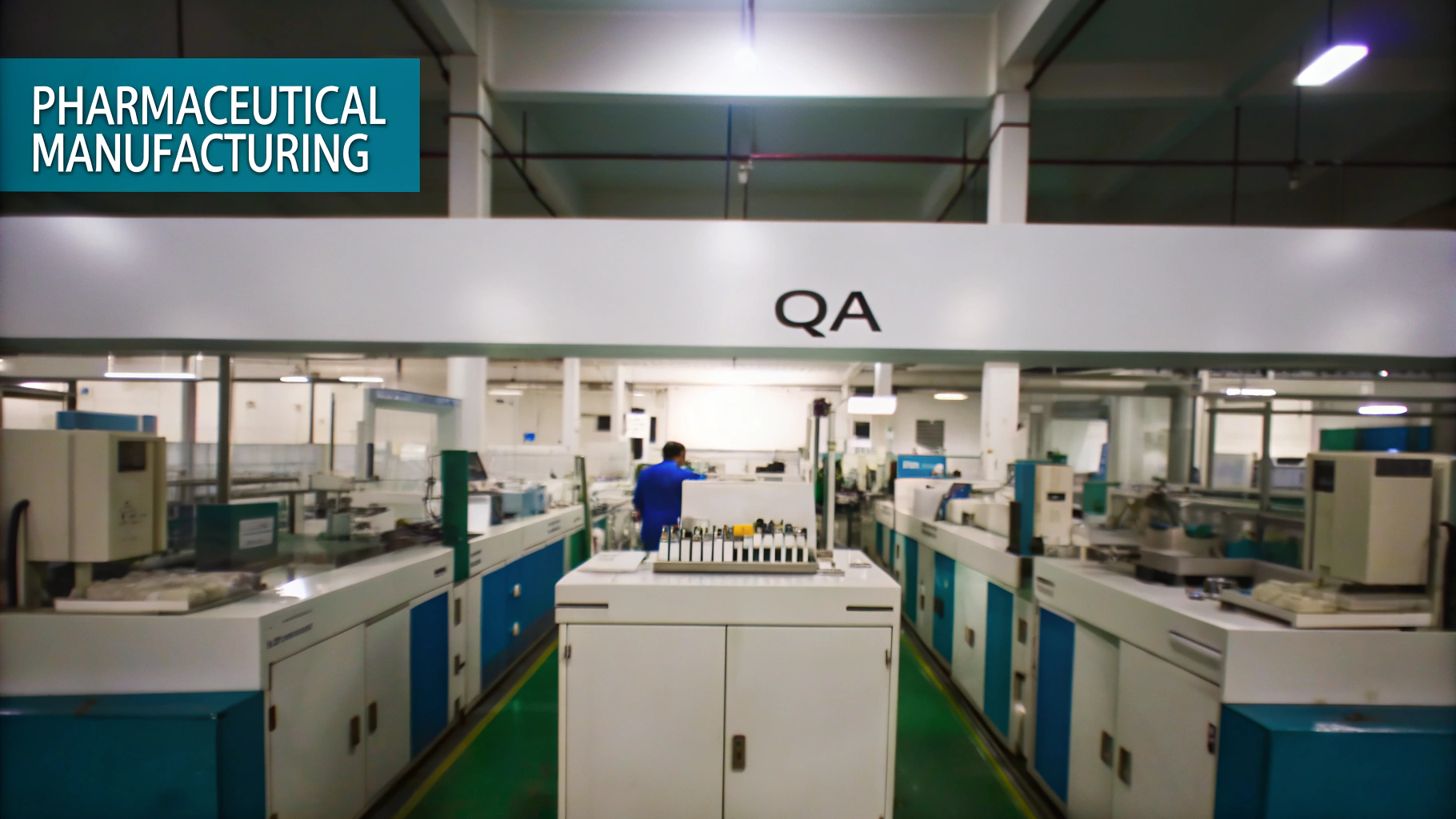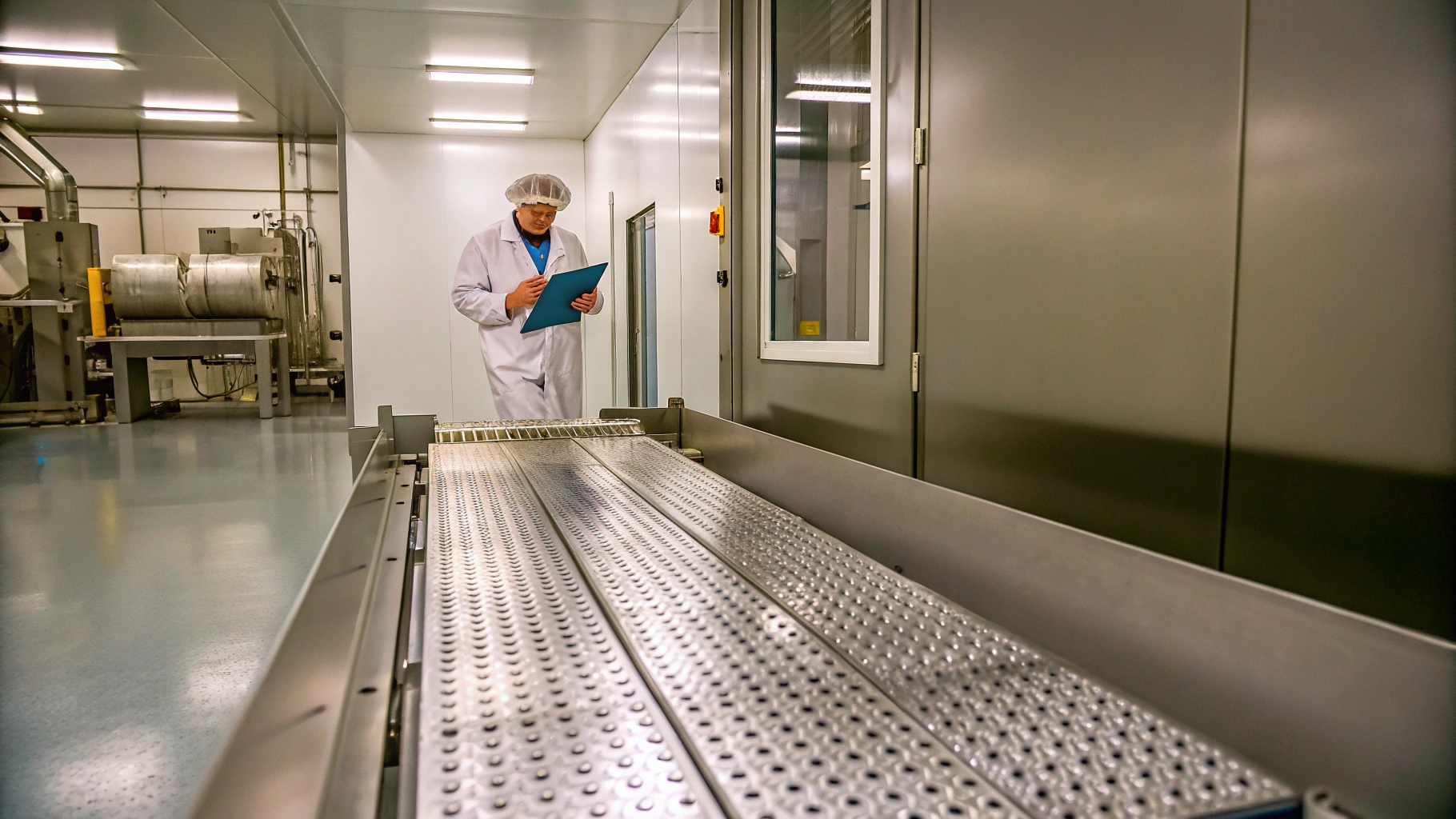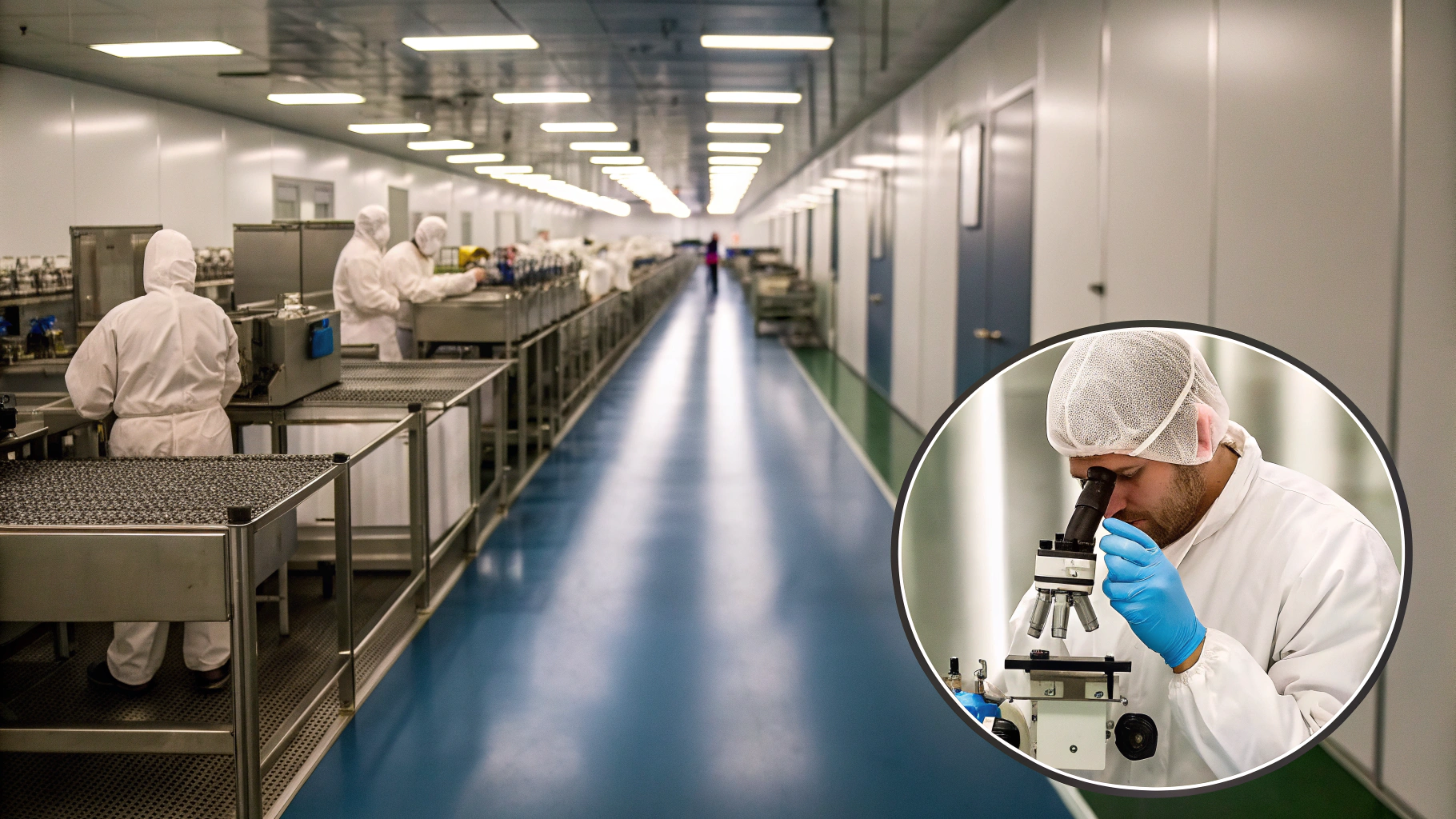Understanding Pharmaceutical Quality Assurance: Definition and Key Aspects

Overview
Pharmaceutical quality assurance (QA) is a systematic framework of processes designed to ensure that medicinal products consistently meet established safety and efficacy standards throughout their lifecycle. This framework addresses compliance challenges by emphasizing the importance of proactive strategies.
- Adherence to Good Manufacturing Practices (GMP)
- Rigorous documentation
These are essential components that collectively enhance product quality and foster public trust in the pharmaceutical industry. By implementing these strategies, organizations can not only meet regulatory requirements but also elevate their reputation in the marketplace. It is imperative for stakeholders to recognize the critical role of QA in safeguarding public health and ensuring the efficacy of medicinal products.
Introduction
Pharmaceutical quality assurance is a cornerstone of the healthcare landscape, ensuring that every medicinal product meets the highest standards of safety and efficacy. As the global drug production market expands, the demand for robust QA practices becomes increasingly apparent, not only ensuring compliance with regulatory mandates but also protecting public health. Yet, amidst the complexities of evolving regulations and the necessity for continuous improvement, pharmaceutical companies face the pressing question: how can they effectively navigate these challenges while upholding trust and integrity in their products?
Define Pharmaceutical Quality Assurance
Pharmaceutical quality assurance (QA) involves a systematic framework of processes and procedures aimed at ensuring that medicinal products consistently meet established standards throughout their lifecycle. This coverage spans every stage of production, from sourcing raw materials to the distribution of the final product. QA transcends the mere testing of finished goods; it emphasizes proactive strategies focused on defect prevention and compliance with regulatory mandates. The primary objective of pharmaceutical quality assurance is to ensure that products are safe, effective, and of the highest quality, thereby safeguarding public health and fostering consumer trust in pharmaceutical companies.
The successful implementation of QA practices has been shown to significantly enhance the safety of products. For example, organizations that employ Statistical Process Control (SPC) can effectively monitor and control production processes, thereby reducing the risk of nonconforming products that could endanger patient health. The global drug production market, projected to grow at a compound annual growth rate (CAGR) of 7.63%, underscores the increasing demand for robust assurance measures as companies strive to meet evolving regulatory standards and consumer expectations.
Key processes integral to pharmaceutical quality assurance encompass:
- Rigorous documentation
- Adherence to Good Manufacturing Practices (GMP)
- Application of Experimental Design Studies (EDS) for process optimization
These methodologies not only streamline operations but also elevate the overall quality of products. Expert perspectives emphasize that maintaining standards is a collective responsibility, necessitating involvement from all departments within a company, thereby reinforcing the notion that every link in the chain impacts the final outcome.
As we approach 2025, the importance of upholding high standards in medications cannot be overstated. With regulatory agencies mandating enhanced monitoring protocols, the integration of advanced management systems will be crucial for organizations aiming to ensure compliance and the safety of their products.

Trace the Evolution of Quality Assurance in Pharmaceuticals
The development of standards in the drug industry commenced in the early 20th century, driven by the urgent need for uniform practices in response to public health crises. The establishment of the Food and Drug Administration (FDA) in 1906 represented a pivotal moment, introducing regulations that mandated rigorous safety and efficacy testing for drugs. This fundamental shift laid the groundwork for subsequent advancements in standards management.
The introduction of Good Manufacturing Practices (GMP) in the 1960s further strengthened pharmaceutical quality assurance practices, ensuring that drug products were consistently produced to meet established standards. Today, the oversight of pharmaceutical standards is a dynamic and evolving field, continuously adapting to emerging technologies, regulatory updates, and the demands of a global market.
A recent case study involving AVS Life Sciences effectively illustrates this evolution. The company assisted a leading biotechnology firm in upgrading their manufacturing space from a Biosafety Level 1 GMP facility to a Level 2 GMP facility. This project was completed on time and within budget, showcasing AVS's commitment to assurance and regulatory compliance.
During this upgrade, challenges such as the misalignment of barcode scanner cameras were identified, initially leading to anomalies in test results. AVS's comprehensive inquiry and resolution of these issues enabled the client to focus on developing treatments for serious illnesses while ensuring that the transition adhered to all essential standards.
Furthermore, modern practices underscore the importance of supplier standards through enhanced re/qualification programs and risk evaluations. It is crucial to differentiate between Quality Assurance (QA), which emphasizes integrating excellence into processes, and Quality Control (QC), which identifies defects in finished products.
Regulatory frameworks such as FDA CFR 21 Part 210 and 211, ICH Q10, and WHO Guidelines on GMP guide drug safety systems, while documentation control and audit readiness remain vital components of effective management.

Identify Key Components of Pharmaceutical Quality Assurance
Key components of pharmaceutical assurance encompass several essential elements:
-
Management Systems (QMS) - These frameworks establish structured processes for maintaining standards. Organizations boasting mature QMS achieve an impressive average on-time delivery rate of 92%.
-
Documentation Control - This involves meticulous maintenance and accessibility of all procedures, specifications, and records, which is crucial for compliance and operational efficiency. Efficient documentation methods can significantly minimize mistakes and enhance the quality of the product.
-
Training and Competence - Providing employees with the necessary skills and knowledge is vital for effective performance. Training programs that emphasize statistical techniques and performance monitoring prepare staff to recognize and proactively address issues.
-
Internal Audits - Regular assessments ensure compliance with established procedures and regulations, fostering a culture of continuous improvement. Companies that prioritize internal audits often experience a reduction in customer complaints by up to 40%.
-
Risk Management - This entails recognizing and mitigating potential threats to product quality, which is crucial in a sector facing increased regulatory scrutiny. By implementing robust risk management strategies, organizations can enhance their ability to deliver safe and effective offerings.
Each of these elements is essential for fostering a culture of excellence within pharmaceutical companies, ultimately enhancing pharmaceutical quality assurance and resulting in safer and more efficient products.
Emphasize Regulatory Compliance in Quality Assurance
Regulatory compliance is a cornerstone of pharmaceutical quality assurance, guaranteeing that products adhere to the rigorous standards established by authorities like the FDA, EMA, and WHO. Compliance with Good Manufacturing Practices (GMP) and Quality System Regulations (QSR) transcends mere legal obligation; it is vital for ethical operations within the industry. These regulations encompass a wide range of requirements, including:
- Facility design
- Equipment maintenance
- Employee training
- Product testing
The repercussions of non-compliance can be dire, leading to recalls, legal penalties, and significant reputational damage. Notably, 96% of organizations reported experiencing a recall in the past five years, underscoring the critical necessity for effective management systems. Organizations that prioritize a robust pharmaceutical quality assurance framework centered on regulatory adherence not only safeguard product integrity but also foster public trust in the healthcare sector.
Expert insights indicate that companies viewing quality as a competitive advantage are better equipped to navigate compliance complexities, with 83% of firms acknowledging that a quality management solution facilitated their recovery from product recalls. As the landscape of pharmaceutical manufacturing continues to evolve, unwavering commitment to pharmaceutical quality assurance and compliance with GMP and QSR will remain essential in mitigating risks and bolstering operational resilience.

Conclusion
Pharmaceutical quality assurance stands as the cornerstone of the drug manufacturing process, ensuring that medicinal products consistently meet stringent safety and efficacy standards throughout their lifecycle. This comprehensive framework encompasses rigorous testing and emphasizes proactive measures to prevent defects while maintaining compliance with evolving regulatory requirements. By prioritizing quality assurance, pharmaceutical companies safeguard public health and cultivate consumer trust in their products.
The article delineates several key components vital to effective pharmaceutical quality assurance, including:
- Robust management systems
- Meticulous documentation control
- Comprehensive training
- Effective risk management strategies
Each element is instrumental in fostering a culture of excellence within organizations, ultimately resulting in higher quality products and enhanced patient safety. Moreover, the historical context provided illustrates the evolution of quality assurance practices, adapting to regulatory changes and technological advancements.
As the pharmaceutical landscape continues to expand and evolve, the significance of upholding high-quality standards cannot be overstated. Organizations must acknowledge that a commitment to quality assurance transcends mere compliance; it is an essential strategy for ensuring product integrity and fostering public confidence. Embracing these principles not only mitigates risks associated with regulatory non-compliance but also positions companies as leaders in a competitive market, ultimately benefiting both the industry and the consumers it serves.
Frequently Asked Questions
What is pharmaceutical quality assurance (QA)?
Pharmaceutical quality assurance (QA) is a systematic framework of processes and procedures designed to ensure that medicinal products consistently meet established standards throughout their lifecycle, from sourcing raw materials to the distribution of the final product.
What is the primary objective of pharmaceutical quality assurance?
The primary objective of pharmaceutical quality assurance is to ensure that products are safe, effective, and of the highest quality, thereby safeguarding public health and fostering consumer trust in pharmaceutical companies.
How does pharmaceutical QA differ from simple testing?
Pharmaceutical QA goes beyond merely testing finished goods; it emphasizes proactive strategies focused on defect prevention and compliance with regulatory mandates.
What are some key processes involved in pharmaceutical quality assurance?
Key processes integral to pharmaceutical quality assurance include rigorous documentation, adherence to Good Manufacturing Practices (GMP), and the application of Experimental Design Studies (EDS) for process optimization.
How can organizations enhance the safety of their products through QA practices?
Organizations can enhance product safety by employing methods such as Statistical Process Control (SPC) to effectively monitor and control production processes, thereby reducing the risk of nonconforming products that could endanger patient health.
What is the projected growth of the global drug production market?
The global drug production market is projected to grow at a compound annual growth rate (CAGR) of 7.63%, highlighting the increasing demand for robust assurance measures to meet evolving regulatory standards and consumer expectations.
Why is maintaining high standards in medications important as we approach 2025?
Maintaining high standards in medications is crucial as regulatory agencies are mandating enhanced monitoring protocols, and organizations will need to integrate advanced management systems to ensure compliance and the safety of their products.
